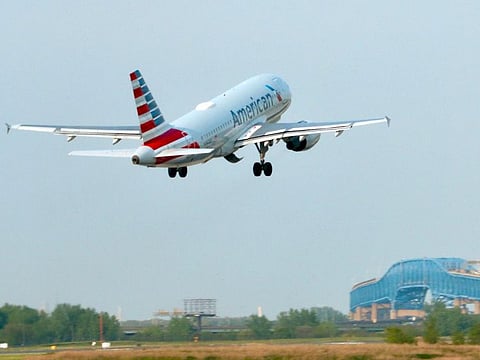COVID-19: Why airlines are blocking off middle seats
Coronavirus fears mean that social distancing will become a top priority in the skies

For many industries across the country, the solution to abide by social-distancing guidelines implemented in the wake of the coronavirus outbreak has been to shut down operations entirely.
But for airlines — deemed essential by the federal government — closing is not an option. So they’ve had to get creative while still allowing passengers to fly.
Airlines are also reducing the number of passengers who board and, ultimately, travel on each flight
One of the ways is by blocking off an area of the plane loathed by flyers: the middle seat.
In the US Delta recently announced a slew of changes to flight service to comply with social distancing, including blocking middle seats when booking for its main cabin, Comfort Plus and Premium Select seats on all of its flights.
Taking effect shortly
Set to take effect shortly, the changes are meant to “promote a safe flying experience” and will give passengers a little extra space when selecting seats.
Once on-board, passengers can also move to a different seat altogether if it establishes the recommended six feet between people.
American Airlines unveiled a similar policy it calls “relaxed seating,” which will block 50 per cent of the middle seats on each plane, as well as those near attendants’ “jump” seats. Passengers can similarly move to another available seat.
“American is committed to caring for customers through these unprecedented times,” said senior vice president of customer experience Kurt Stache in a statement.
Safe seating assignments
The airlines are being proactive, too. Flight attendants have the authority to map out safe seating assignments as travellers board.
Airlines are also reducing the number of passengers who board and, ultimately, travel on each flight.
United, meanwhile, has implemented “a solution to auto-assign and reassign seats,” according to a spokesman for the airline.
These changes are all ushered in as travel has dipped dramatically across the US and rest of the world. The Transportation Security Administration recorded record lows for travellers consistently since the outbreak began to spread rapidly in March.
According to TSA checkpoint data, the number of travellers screened nationwide in the US was close to 100,000. On the same date one year ago, the number of travellers was 2,229,276.
The lack of passengers has devastated the airline industry and worried experts over the future of air travel. Planes have been grounded, many for good, and when travellers are on flights at all, many have seen an 80 per cent reduction in capacity compared with previous markers.
The US Cares Act is set to deliver $50 billion in aid to the ailing airline industry, which observers hope will float it until September.
But the historically low number of travellers means that for now, airlines will have to find new ways to get people to travel while addressing their concerns over virus exposure.
Drew Jones is a journalist
(WP)
Sign up for the Daily Briefing
Get the latest news and updates straight to your inbox






